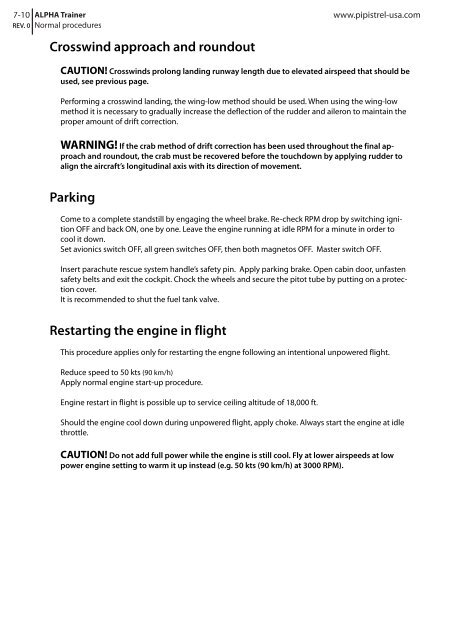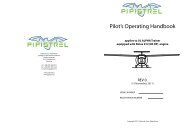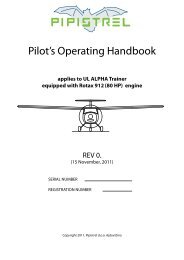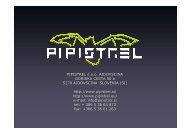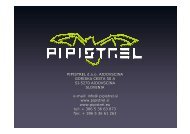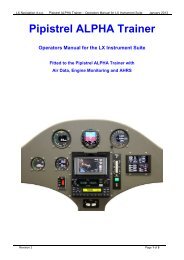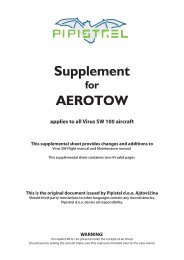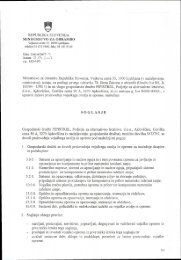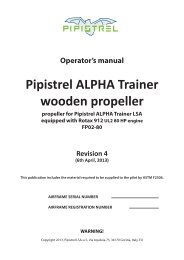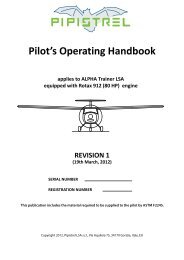ALPHA Trainer Manual Final.pdf - Pipistrel
ALPHA Trainer Manual Final.pdf - Pipistrel
ALPHA Trainer Manual Final.pdf - Pipistrel
Create successful ePaper yourself
Turn your PDF publications into a flip-book with our unique Google optimized e-Paper software.
7-10 <strong>ALPHA</strong> <strong>Trainer</strong><br />
REV. 0 Normal procedures<br />
www.pipistrel-usa.com<br />
Crosswind approach and roundout<br />
CAUTION! Crosswinds prolong landing runway length due to elevated airspeed that should be<br />
used, see previous page.<br />
Performing a crosswind landing, the wing-low method should be used. When using the wing-low<br />
method it is necessary to gradually increase the deflection of the rudder and aileron to maintain the<br />
proper amount of drift correction.<br />
WARNING! If the crab method of drift correction has been used throughout the final approach<br />
and roundout, the crab must be recovered before the touchdown by applying rudder to<br />
align the aircraft’s longitudinal axis with its direction of movement.<br />
Parking<br />
Come to a complete standstill by engaging the wheel brake. Re-check RPM drop by switching ignition<br />
OFF and back ON, one by one. Leave the engine running at idle RPM for a minute in order to<br />
cool it down.<br />
Set avionics switch OFF, all green switches OFF, then both magnetos OFF. Master switch OFF.<br />
Insert parachute rescue system handle’s safety pin. Apply parking brake. Open cabin door, unfasten<br />
safety belts and exit the cockpit. Chock the wheels and secure the pitot tube by putting on a protection<br />
cover.<br />
It is recommended to shut the fuel tank valve.<br />
Restarting the engine in flight<br />
This procedure applies only for restarting the engne following an intentional unpowered flight.<br />
Reduce speed to 50 kts (90 km/h)<br />
Apply normal engine start-up procedure.<br />
Engine restart in flight is possible up to service ceiling altitude of 18,000 ft.<br />
Should the engine cool down during unpowered flight, apply choke. Always start the engine at idle<br />
throttle.<br />
CAUTION! Do not add full power while the engine is still cool. Fly at lower airspeeds at low<br />
power engine setting to warm it up instead (e.g. 50 kts (90 km/h) at 3000 RPM).


